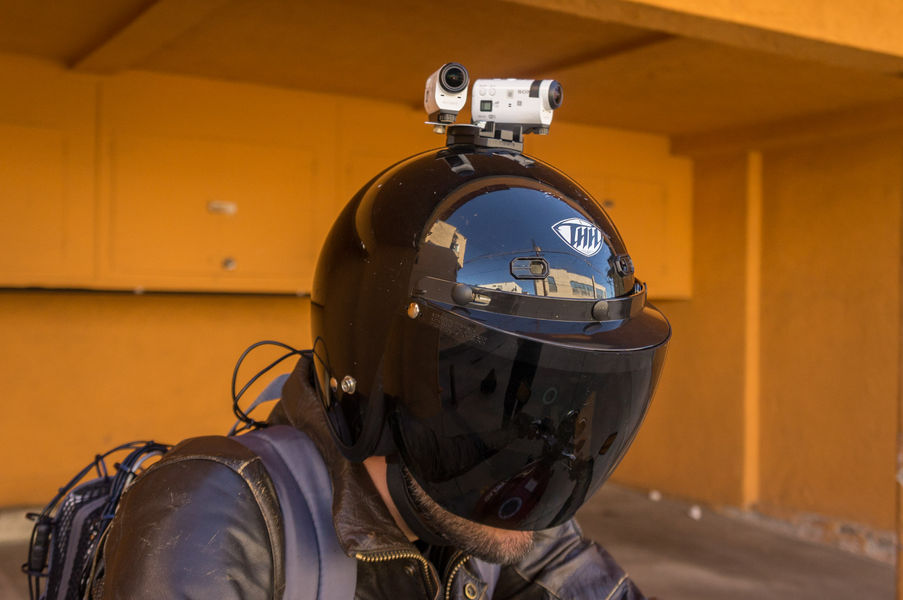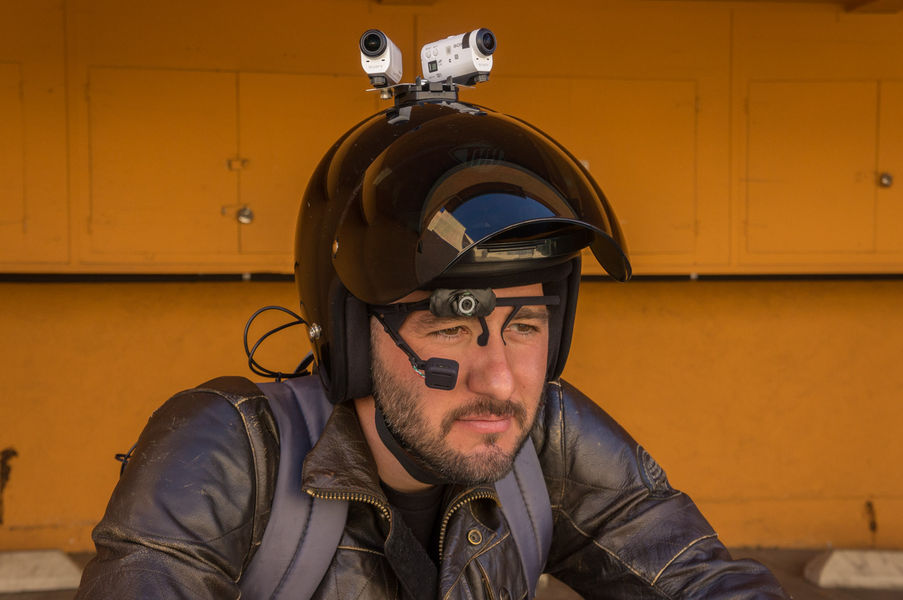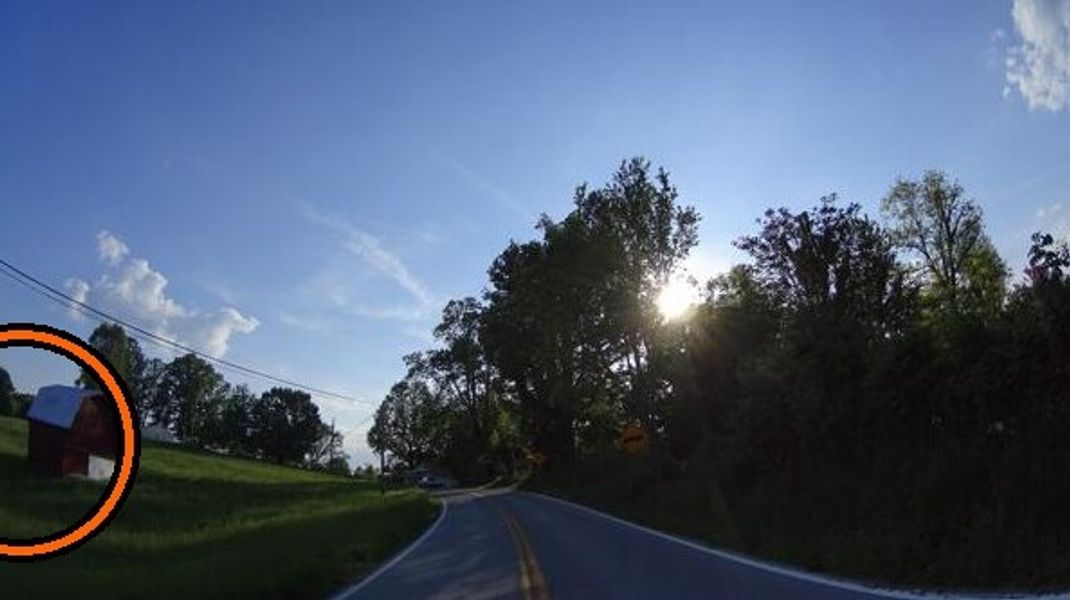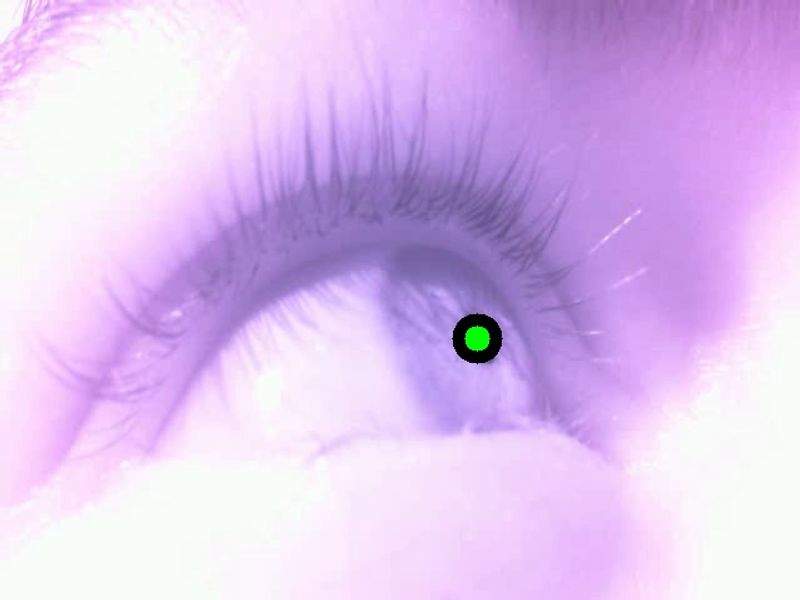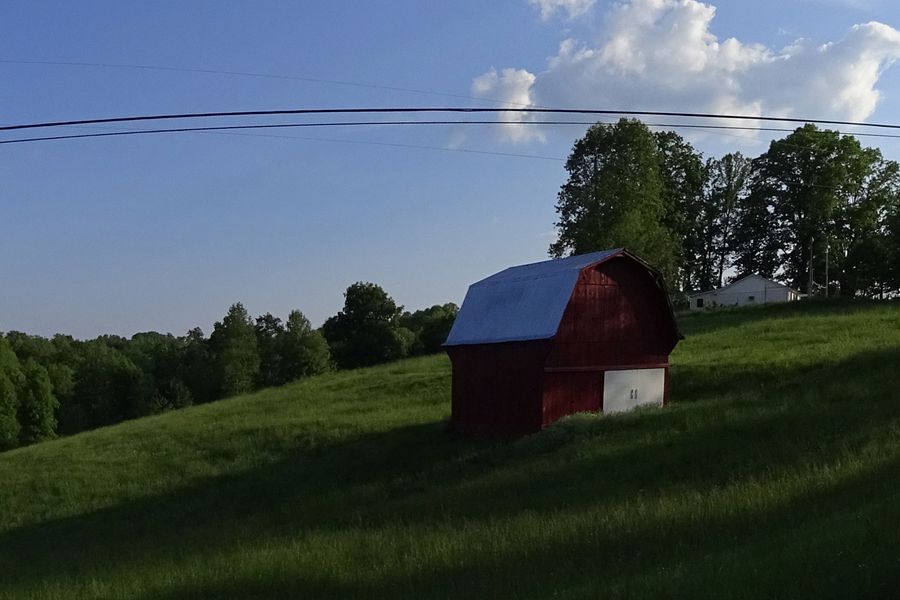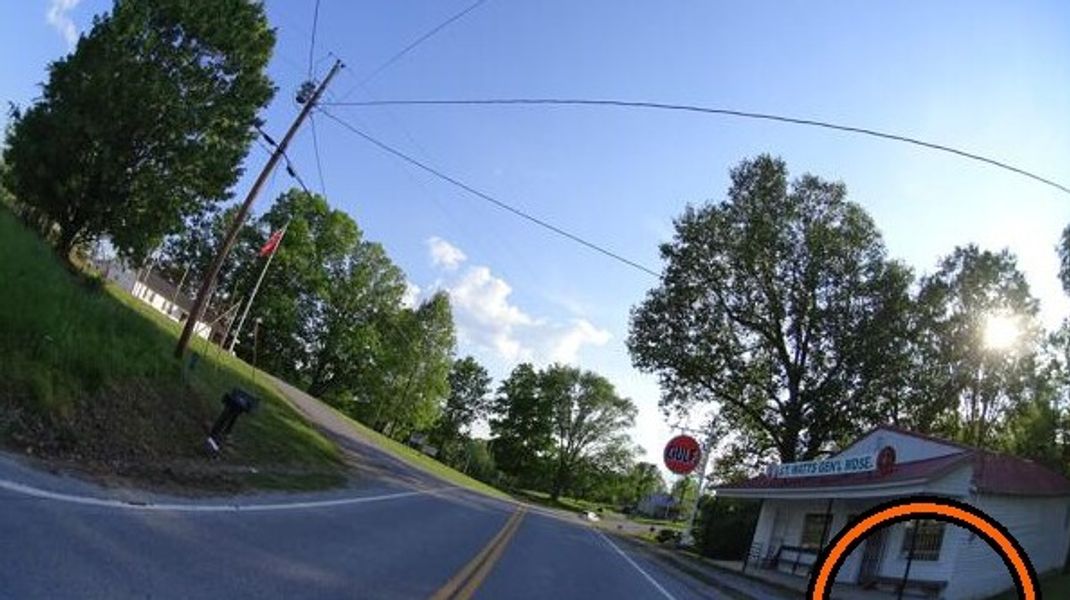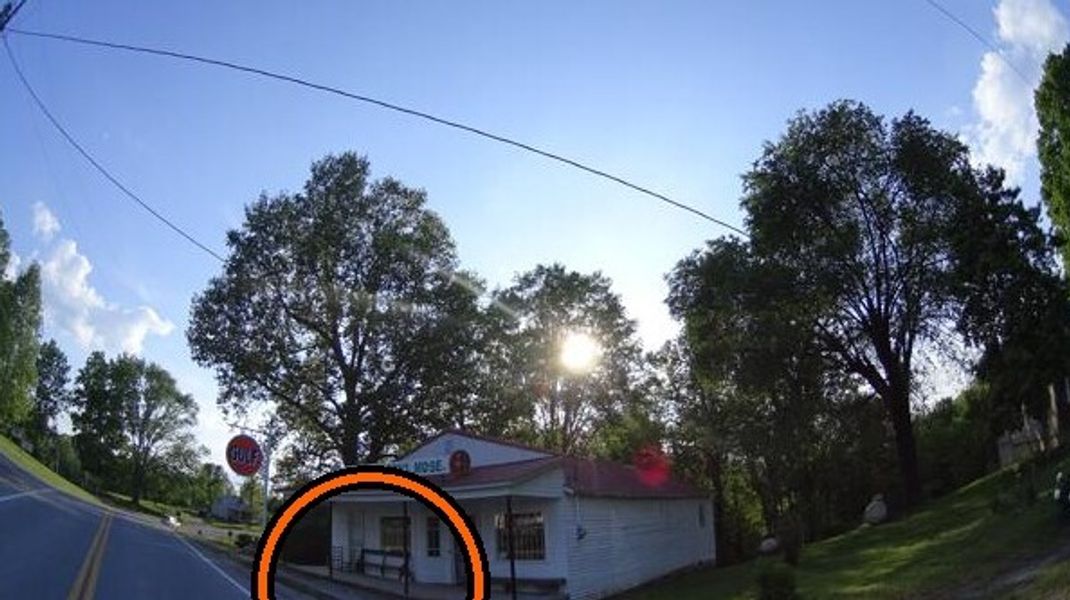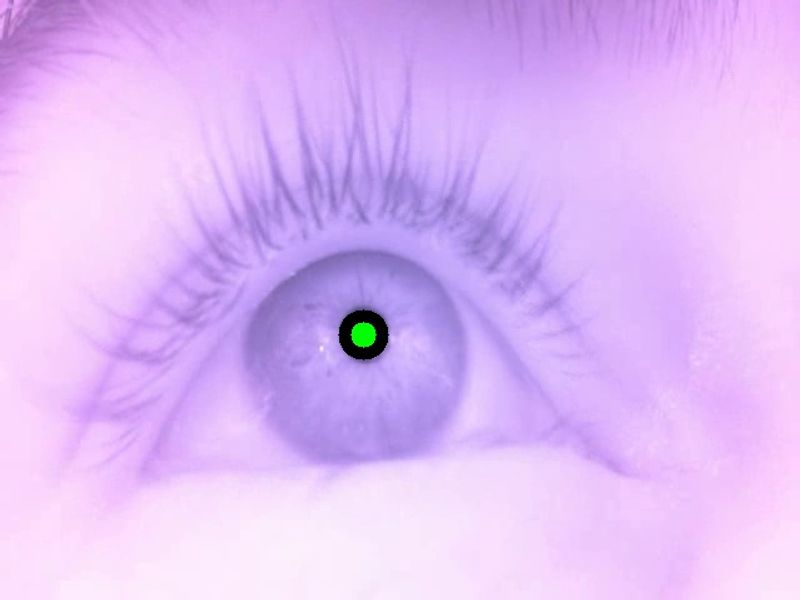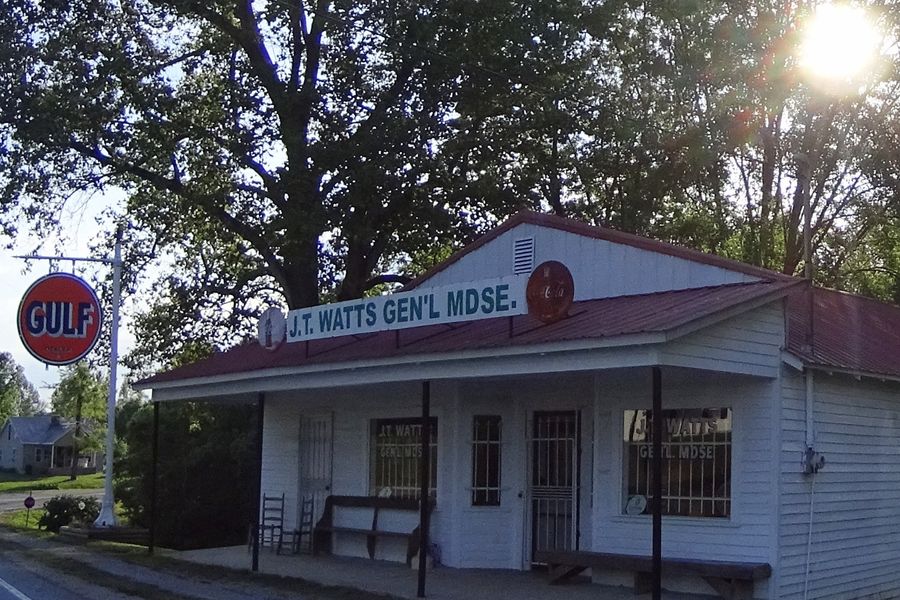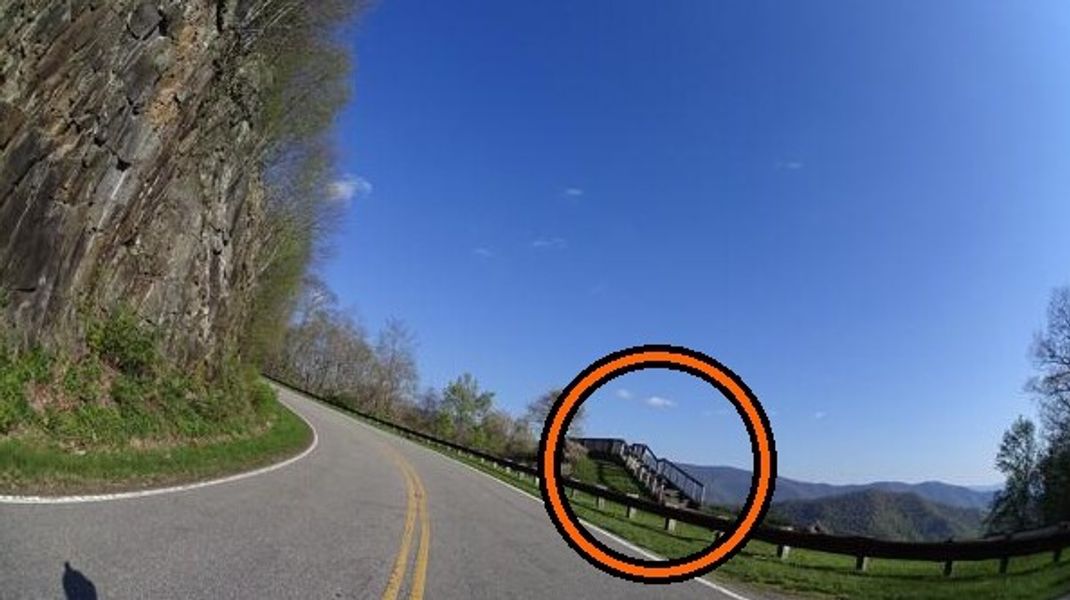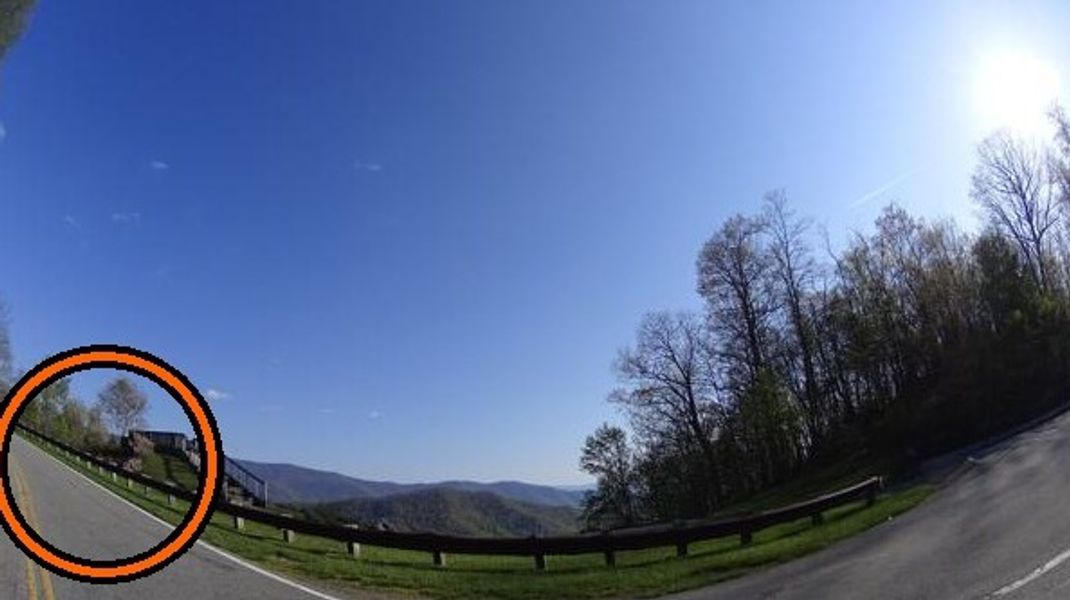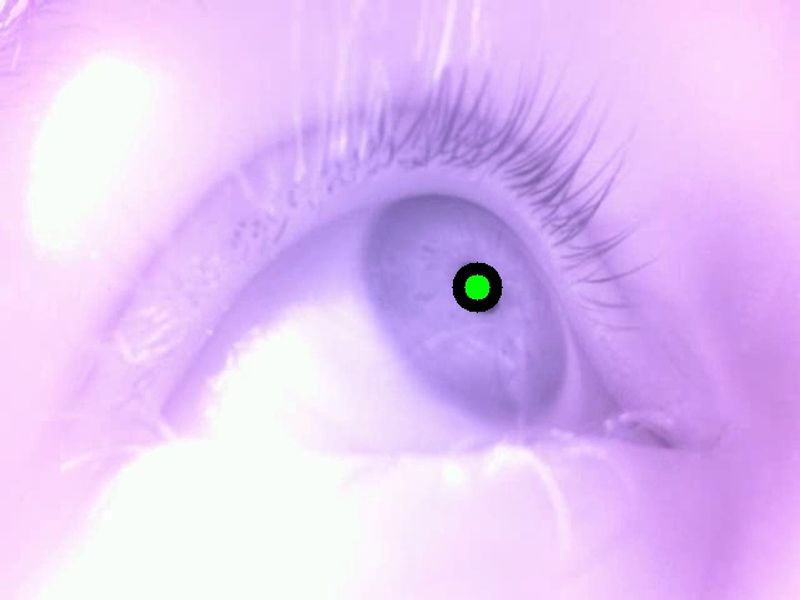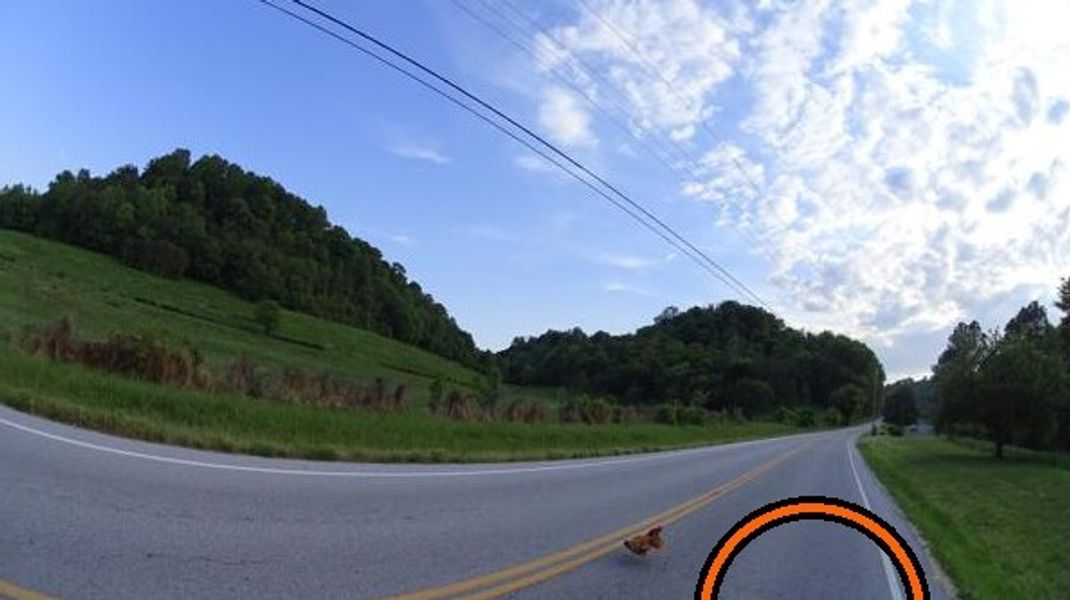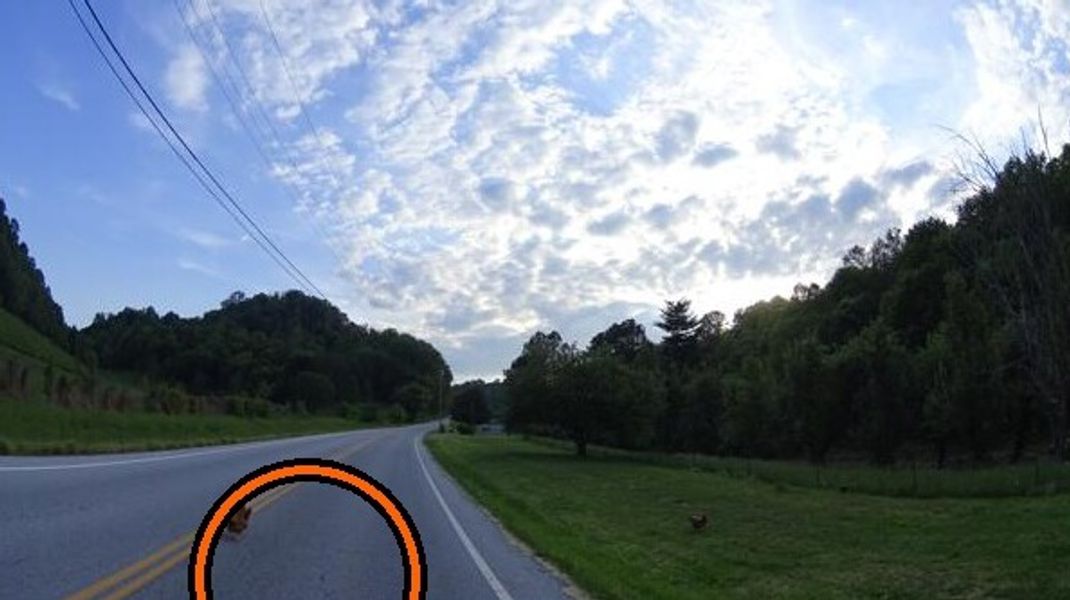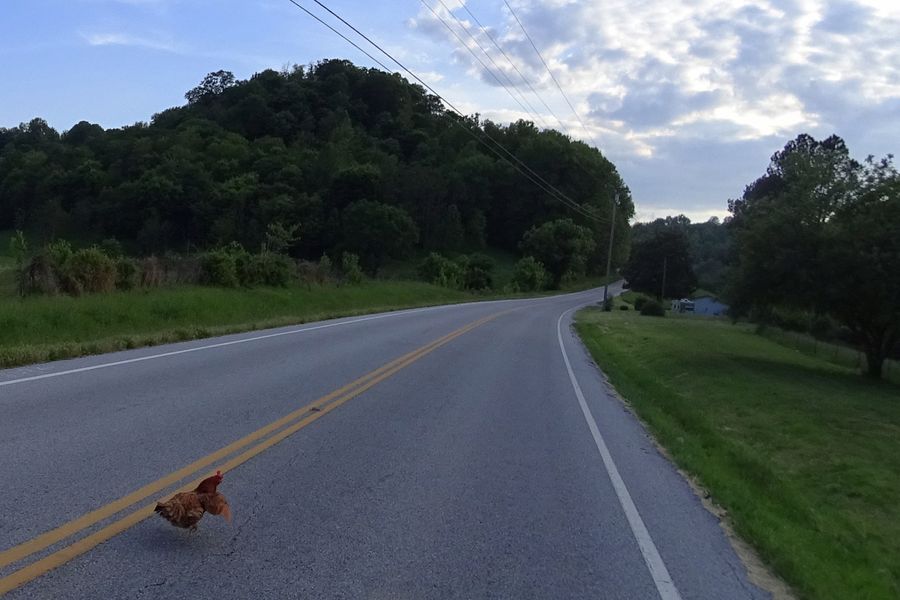During my journey through the Appalachians, I often found myself wishing for a convenient way to capture well-composed still photographs without having to stop riding. This inspired me to design and prototype methods for controlling cameras using eye movements.
My initial objective was to develop a hands-free way of capturing aesthetically pleasing photos of specific targets.
For the first prototype instead of relying on physical camera adjustments, I used two overlapping wide-angle cameras to capture a 180-degree panoramic composite. This allowed me to direct a "virtual camera" precisely towards the desired area. I mounted a trigger button to the handlebars, but voice operation would be more suitable in this context. The eye-tracking glasses were from Pupil Labs.
Below are a few examples from a test run. You can see the wide-angle photos with gaze targets indicated, the pupil tracker images, and the final resulting photos.
Why did the chicken cross the road? To test the speed and accuracy of a gaze-directed photography system, of course!
As time went on, I shifted my focus to conventional handheld camera applications rather than helmet-mounted cameras. Certain aspects of this work have now been incorporated into the tools Basil Gang is developing for cinematographers.
